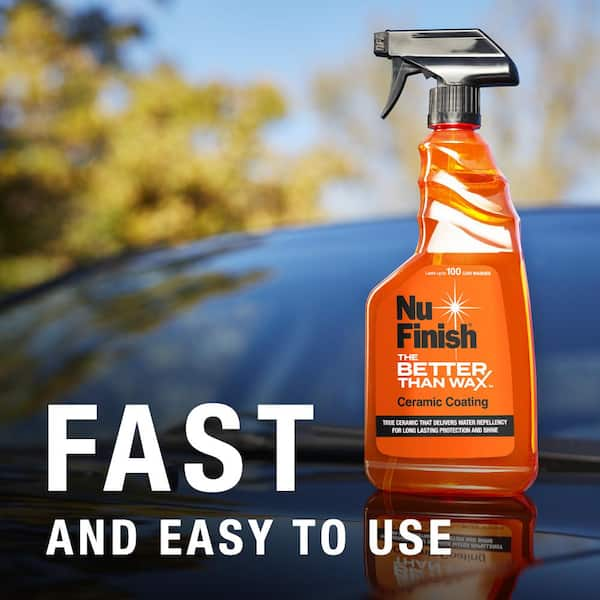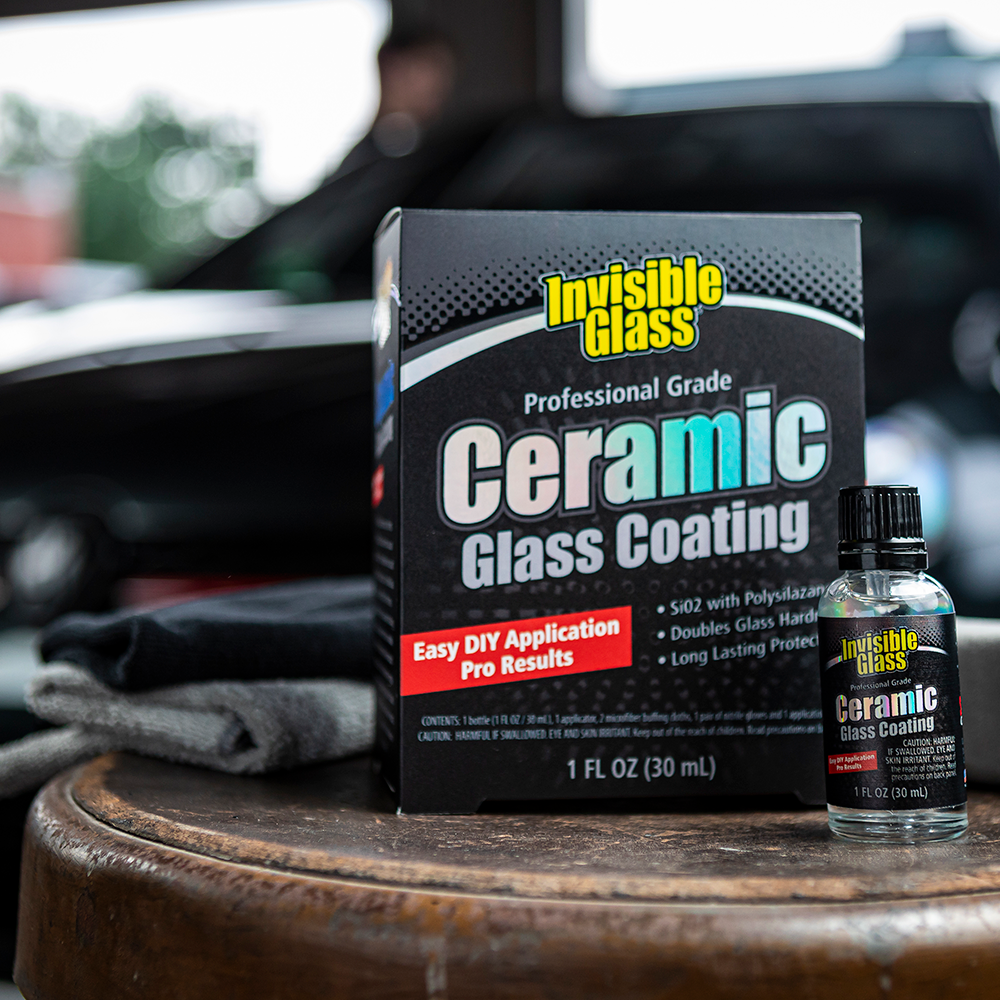Locating the Right Kind of Ceramic Finish Best for Your Car: A Comprehensive Guide
Choosing the ideal ceramic covering for your vehicle is a nuanced procedure that calls for mindful consideration of numerous aspects. From understanding the distinctions in between consumer-grade and professional-grade products to evaluating the specific benefits each offers, the choice can substantially influence the long life and look of your car's surface. Furthermore, the application process and your level of proficiency play essential roles in identifying the most effective fit. As we check out these facets, it becomes obvious that a person selection may not fit all lorries, increasing the inquiry of how to identify the ideal remedy for your distinct scenarios.
Understanding Ceramic Coatings
One may wonder what sets ceramic layers in addition to standard waxes and sealants in automotive care. The primary difference depends on the make-up and sturdiness of ceramic layers, which are primarily made from silicon dioxide (SiO2) This sophisticated chemical structure creates a covalent bond with the automobile's paint, creating a durable layer that uses remarkable security against environmental pollutants, UV rays, and small abrasions.
Unlike waxes, which usually supply a temporary obstacle and call for regular reapplication, ceramic finishings can last for numerous years with appropriate maintenance. Their hydrophobic residential properties enable water to grain and roll off the surface, efficiently lessening the build-up of dust and grime, hence simplifying the cleaning process. Ceramic coatings improve the car's gloss and depth of shade, adding to a more cosmetically pleasing appearance.
Additionally, ceramic coverings are immune to chemical discolorations and etching from acidic substances, which can be detrimental to typical wax surfaces. This degree of defense makes sure that the car's exterior stays in ideal problem for an extended duration, making ceramic layers an engaging choice for cars and truck fanatics and everyday motorists alike - Ceramic coating palm harbor. Understanding these attributes is important for making informed decisions regarding vehicle care
Types of Ceramic Coatings
Different kinds of ceramic layers are offered on the marketplace, each created to accommodate different demands and choices of car owners. One of the most typical kinds consist of consumer-grade, professional-grade, and specialized coverings.
Consumer-grade ceramic layers are generally less complicated to use and are optimal for DIY lovers. They supply a basic degree of security and are commonly a lot more cost effective, making them a popular choice for daily lorries.

In addition, there are specialized ceramic layers designed for details applications. For instance, some finishes focus on safeguarding wheels and brake calipers from warmth and debris, while others might be developed especially for glass surfaces to enhance presence and repel water.
Finally, there are hybrid finishings that integrate ceramic technology with conventional wax or sealer buildings, using a balance between ease of application and resilient security. Each type offers a special objective, consequently allowing automobile owners to choose the covering that check my site ideal suits their requirements.
Benefits of Ceramic Covering
Ceramic coverings stand apart for their capacity to supply a durable layer of defense for automobile surface areas, dramatically enhancing the durability and appearance of lorries. One of the main advantages of ceramic finishes is their remarkable longevity. Unlike traditional waxes and sealants, which disappear with time, ceramic coatings bond chemically with the automobile's paint, supplying lasting defense that can endure various ecological problems.
In addition, ceramic finishes provide premium resistance to scratches, UV rays, and chemical contaminants, securing the car's coating from unsafe materials such as bird droppings, tree sap, and roadway salt. This safety obstacle not just protects the auto's aesthetic charm but additionally simplifies maintenance. The hydrophobic properties of ceramic finishings drive away dust, water, and gunk, making regular cleansing more reliable and much less regular.
In addition, the glossy surface attained with ceramic layers boosts the car's look, offering it a newly found sparkle that turns heads. Owners typically find that spending in ceramic coverings enhances their automobile's resale value, as properly maintained paintwork is a considerable consider purchaser rate of interest. Generally, the advantages of ceramic finishings prolong beyond simple defense, using a detailed solution for automobile lovers and everyday vehicle drivers alike.
Application Process and Tips
Effectively applying a ceramic finish calls for cautious prep work and focus to detail to make sure optimal outcomes. Begin by extensively cleaning and sanitizing the vehicle's surface.
As soon as the surface is tidy, check it for flaws such as scratches or swirl marks - Ceramic coating palm harbor. Make use of a dual-action polisher and ideal brightening compounds to fix these acnes, as the ceramic finishing will highlight any kind of surface flaws. After polishing, clean the surface area with isopropyl alcohol to eliminate any residue
When ready to apply the ceramic finishing, job in a controlled environment, preferably inside your home, to avoid dust and straight sunshine. Use an applicator pad to apply the layer in tiny areas, guaranteeing even coverage.
Selecting the Right Product
Picking the ideal ceramic coating for your car can considerably influence the long life and efficiency of the defense it offers. Ceramic coating palm harbor. When considering which product to choose, it is important navigate here to assess several essential elements, including the composition, resilience, and meant usage of the finishing
First, research the various sorts of ceramic coverings available. Products can differ in terms of SiO2 web content, which influences their firmness and hydrophobic homes. Greater SiO2 degrees generally supply exceptional security and longevity, but might additionally come at a higher cost factor.
Following, consider the application procedure. Some layers are developed for specialist usage, needing specialized abilities and tools, while others can be applied by the vehicle proprietor. Choose a product that aligns with your comfort degree and knowledge.
In addition, analyze the environmental problems your lorry will face. Choose for a coating particularly created to resist such difficulties. if you live in a location with severe weather condition or constant direct exposure to pollutants.

Conclusion
In verdict, choosing the suitable ceramic finishing for a vehicle necessitates careful consideration of numerous elements, including the sort of layer, its SiO2 content, and the application procedure. Recognizing the different categories of ceramic finishes and their corresponding advantages is important for optimizing security and long life. By lining up item selection with details ecological conditions and individual expertise, lorry owners can achieve optimal results, ensuring the automobile's coating remains protected versus ecological damages and wear.
Selecting the appropriate ceramic layer for your automobile is a nuanced procedure that calls for careful consideration of numerous elements.Ceramic coverings stand out for their capacity to supply a robust layer of security for vehicle surfaces, significantly enhancing the durability and look of automobiles. Unlike traditional waxes and sealers, which wear off over time, ceramic coverings bond chemically with the automobile's paint, providing resilient security that can sustain different environmental problems.
In addition, ceramic finishes offer superior resistance to scrapes, look at this web-site UV rays, and chemical contaminants, guarding the automobile's coating from hazardous materials such as bird droppings, tree sap, and road salt.In final thought, choosing the proper ceramic covering for a lorry demands careful consideration of various elements, including the kind of finishing, its SiO2 material, and the application procedure.